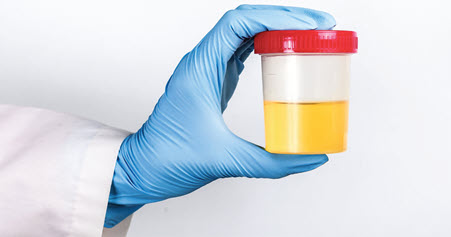Stay Sharp With This Urinalysis Review
Also, understand which modifiers apply to which situations. Urinalyses are common and relatively simple tests to code, but like everything in coding, there are a few nuances that are easy to overlook. That’s why this is as good a time as any to brush up on your skills. Follow us through this review of urinalysis coding and try your hand at the case study at the end to test your coding skills. Determine the Differences Between the Tests Many urinalyses are given a Clinical Laboratory Improvement Amendments (CLIA) certificate of waiver, allowing you to perform them in-house and bill for them in your practice. Most pediatric practices have the ability to conduct one or more of the following: Documentation alert: Before you can bill for a urinalysis, you’ll need documentation from your pediatrician. “This means you’ll need a signed order for the test, and you will need proof that your practice conducted it,” says Mary I. Falbo, MBA, CPC, CEO of Millennium Healthcare Consulting Inc. in Lansdale, Pennsylvania. “In addition, the order should specify whether the test will use microscopy; because if it doesn’t, an auditor will downgrade the service to a service that does not involve which are simpler and less expensive tests. Your documentation does not need to specify if the urinalysis is automated, as this is just the method of testing. But you will have to know which method your pediatrician has ordered,” Falbo notes. In order to do that, you’ll need to know what the different processes described in the code descriptors: Non-automated tests involve comparing the color changes on a test strip after it has been placed in the urine sample to a color chart provided by the test manufacturer. This can also be done by placing a reagent tablet in the sample, which changes the color of the urine (codes 81000 and 81002). Automated tests involve a machine that analyzes the test strip automatically (codes 81001 and 81003). Microscopy tests involve viewing elements in the urine sample such as bacteria or crystals using a microscope (codes 81000 and 81001). So, if your tester views a test strip manually without using a microscope for further analysis, you would select urinalysis code 81002. Know When and How to Report an E/M With the Tests Most of the time, you’ll report the tests and an office/outpatient evaluation and management (E/M) service separately. No CPT® guidelines prohibit this in the outpatient setting, and no National Correct Coding Initiative (NCCI) edit exists for 81000-81003 when the tests are Column 2, or component, codes for office/outpatient E/M services 99202-99215 (Office or other outpatient visit for the evaluation and management of a/an new/established patient …). There is a potential exception to this rule, but it’s not common for patients in the pediatric age group. “Some payers will consider codes 81001 and 81002 as included in the global period for antepartum or global ob-gyn service when submitted with an ob-gyn diagnosis code in the office setting,” says Jessica Miller, CPC, CPC-P, CGIC, manager of professional coding for Ciox Health in Alpharetta, Georgia. When in doubt, check with the payer. Modifier alert: “For non ob-gyn patients, however, the urinalysis is usually separately reported with an E/M, but some payers may require a modifier 25 [Significant, separately identifiable evaluation and management service by the same physician or other qualified health care professional on the same day of the procedure or other service] appended to the E/M,” Falbo adds. In cases where payers deny 81000-81003 when bundled into an office/outpatient E/M, you can also try appending modifier 59 (Distinct procedural service) to the 81000-81003 codes to see if that overrides the edit in question. Use Caution When Appending the QW Modifier One source of confusion surrounding 81000–81003 involves whether or not you should append modifier QW (CLIA waived test). Two of the test codes, 81002 and 81003, appear on the most recent list of CLIA-waived tests (www.cms.gov/files/ document/mm12581-new-waived-tests.pdf). But a closer look at the list shows that 81002 does not require the QW modifier for payers to recognize it as a waived test. Also, not all 81003 tests will take the modifier. Only the ones listed at www.accessdata.fda.gov/scripts/cdrh/cfdocs/cfClia/ analyteswaived.cfm will take it. If you’re unsure, search the list for the particular test your pediatrician is using. Coding Alert: To perform CLIA-waived tests, your office must have a CLIA Certificate of Waiver. If your practice does not already have one, you can view the process involved in obtaining one by going to www.cms.gov/ Regulations-and-Guidance/Legislation/CLIA/downloads/ HowObtainCertificateofWaiver.pdf. Can You Code This Recheck Scenario? The pediatrician ordered a urinalysis as part of a patient well check. The test came back abnormal. The child came back the following day for a recheck, but this time the test came back normal. The first date of service: First, code for the well-child check using the age-appropriate code from 99381-99395 (Initial/ periodic comprehensive preventive medicine evaluation/ reevaluation and management of an individual …). Additionally, as the preventive evaluation and management (E/M) uncovered an abnormal finding, you can also bill 99213 (Office or other outpatient visit… low level…) based on the ordered and reviewed test and a self-limited or minor condition that presents a low risk of morbidity from additional diagnostic testing or treatment. To identify the office/outpatient E/M service as significant and separate from the preventive service, be sure to append modifier 25 (Significant, separately identifiable evaluation and management service by the same physician or other qualified health care professional on the same day of the procedure or other service) to 99213. Next, you would code for the tests themselves. If they were performed in-house, that would likely mean reporting 81000 or 81002. Remember: You’ll also need to code Z00.121 (Encounter for routine child health examination with abnormal findings) to the preventive E/M and a signs and symptoms code for the condition such as R31.9 (Hematuria, unspecified) or R80 (Proteinuria) — if appropriate and depending on the lab test findings. The second date of service: Typically, in urine rechecks like this on a different date of service, you won’t be able to justify the medical necessity for a significant, separate office/ outpatient E/M unless your pediatrician performed one. Instead, you’ll simply use the appropriate urinalysis lab code again for the test along with Z09 (Encounter for follow-up examination after completed treatment for conditions other than malignant neoplasm).





